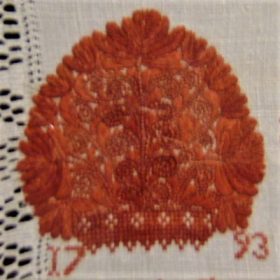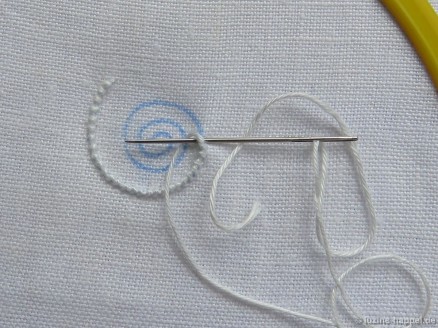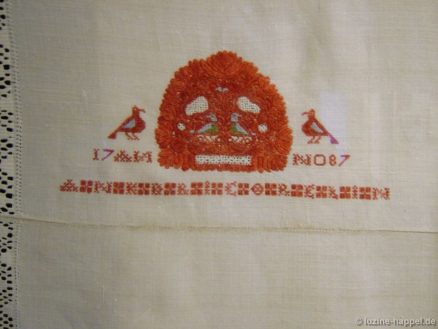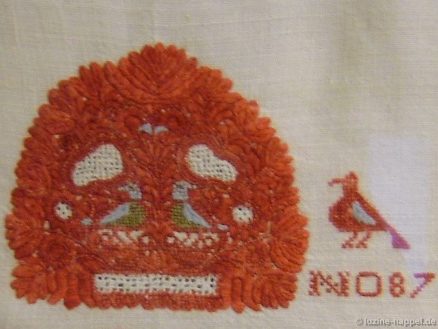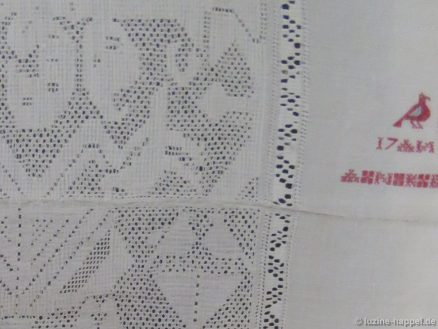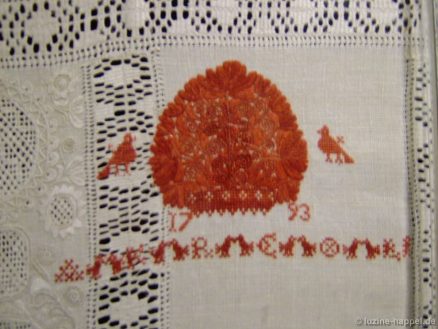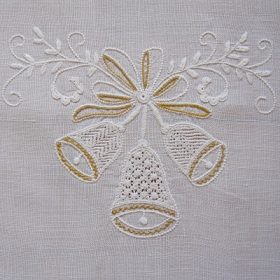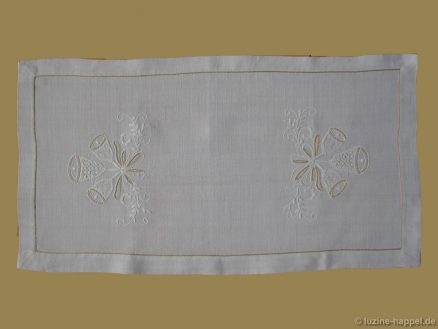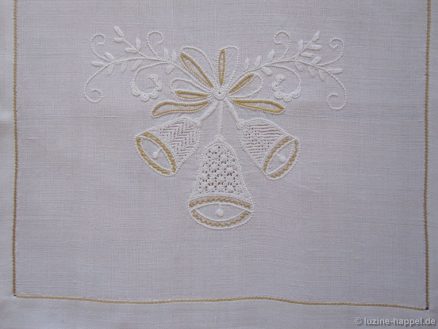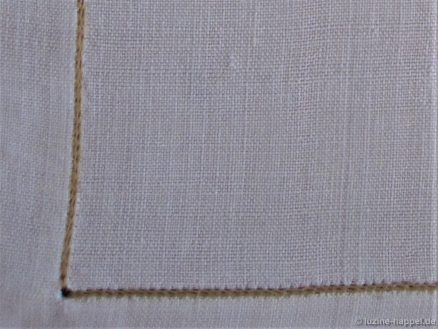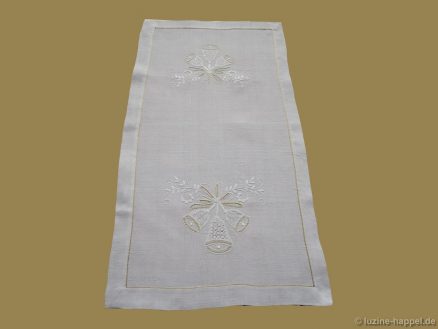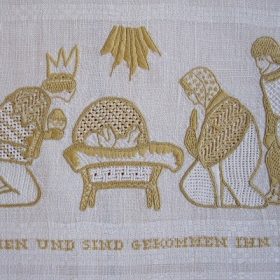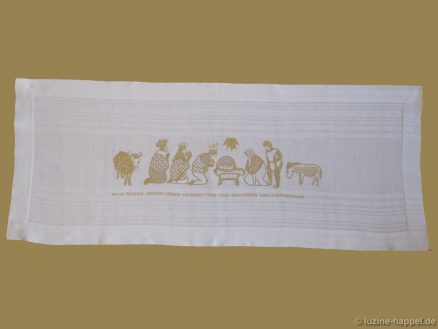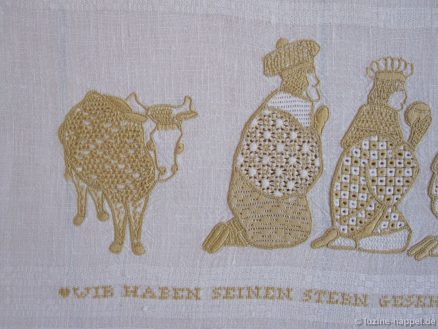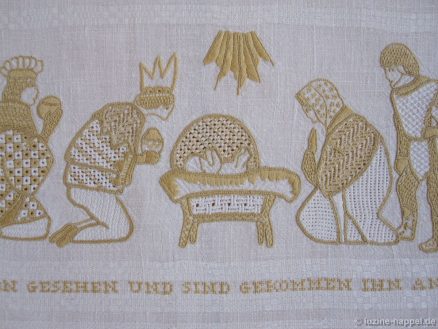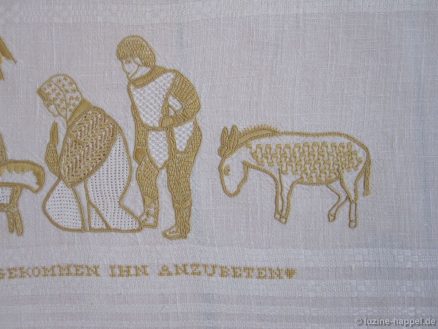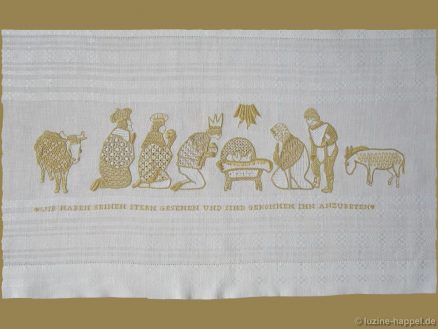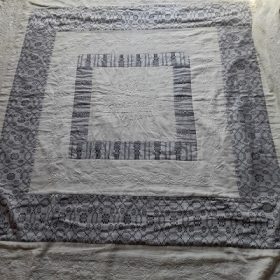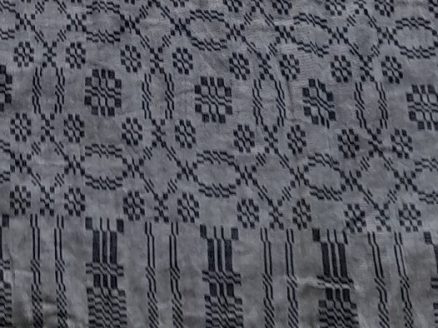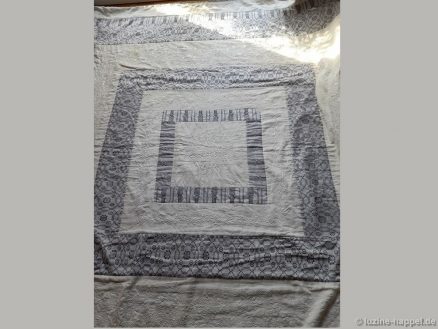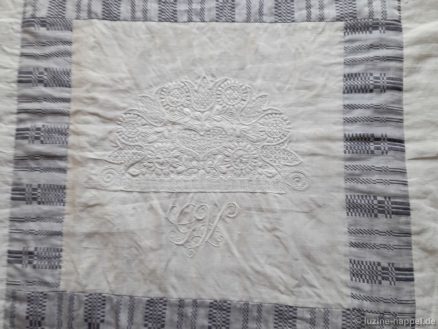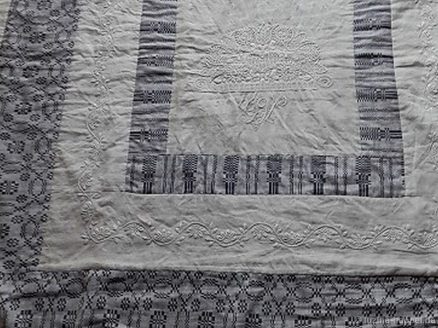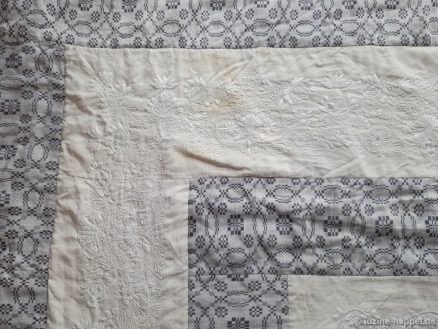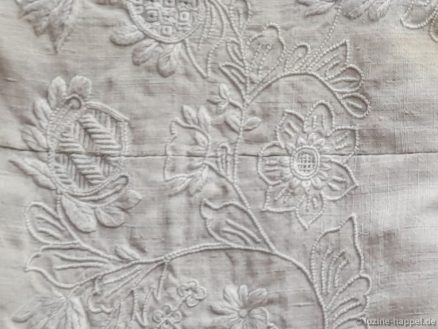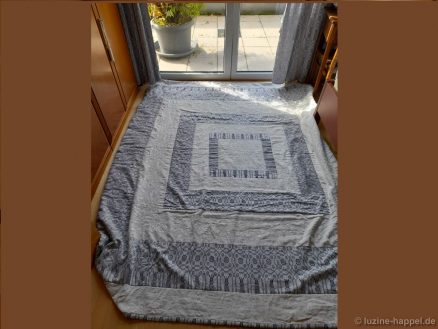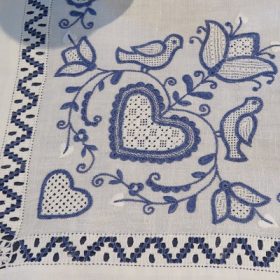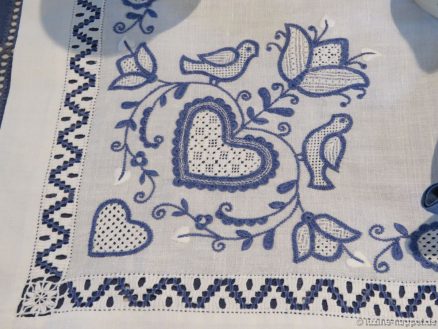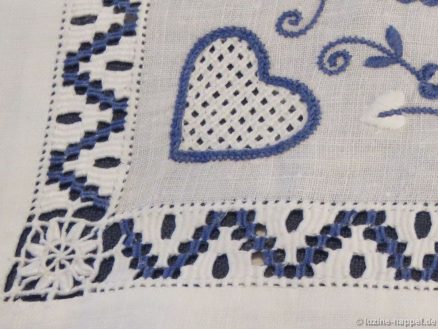A significant feature of what we nowadays understand as Schwalm whitework are the Coral Knot stitches.
In the Schwalm I did not discover the earliest Coral Knot stitches in whitework, but in a red embroidered crown. The embroidery shows the year 1787.
The Coral Knot stitches were worked as stems and around the withdrawn-thread patterns.
The appropriate whitework border consists of a wide openwork band that has been decorated with Needle-weaving, Rose and Cable stitches.
In Schwalm whitework I found the earliest Coral Knot stitches on a bedcovering from 1793. Here, too, the crown is embroidered in red and has Coral Knot stitches. But Coral Knot stitches were also used in the adjacent whitework – for outlining the withdrawn-thread patterns, for stems and tendrils.
Both textiles are exhibited in the Museum der Schwalm in Ziegenhain.
But how did the Coral Knot stitches get into the Schwalm?
In a treatise by Agnes Geihseder on the history of embroidery
I found information that in the 17th century, among other stitches, Coral Knots became a method used at that time.
But neither the peasant embroidery in the Czech Republic nor the early Hedebo embroidery in Denmark, both of which show similarities with Schwalm whitework, did not use Coral Knot stitches.
So far I have not found any indication of how the Coral Knot stitch got into the Schwalm.
Maybe you can help: In which regions of Europe were Coral Knot stitches part of regional embroidery before 1780?
